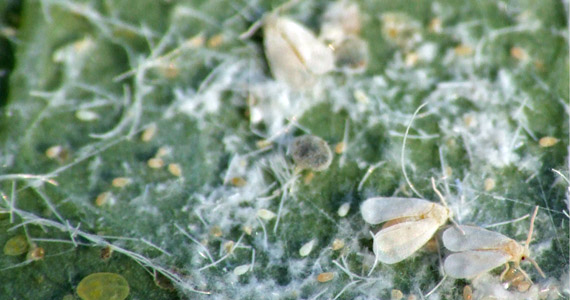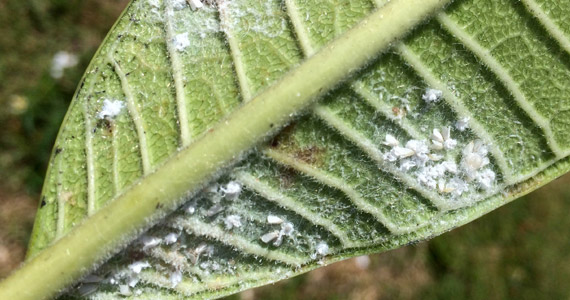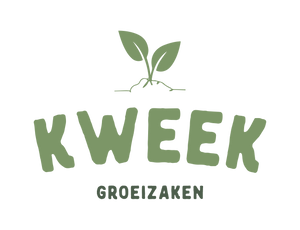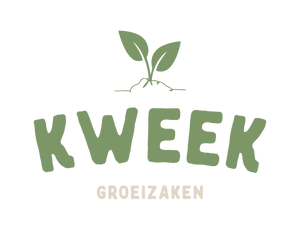Whitefly - Pests and Diseases

Briefly about the plague
- What are Whiteflies?
- Whiteflies are half-winged insects belonging to the family Aleyrodidae. They can cause significant damage and loss of production.
- What is there to see?
- Discolored spots on the parts of the leaf where the insects have fed.
- What can be done about it?
- One of the most important goals in controlling whitefly is to prevent the crop from being affected by a virus that can be carried by the insects.
Biological cycle of whiteflies
The full life cycle of the whitefly is between 15 and 40 days. This depends on environmental conditions, especially temperature, as the eggs develop into adult flies more quickly when the temperature is higher. The whitefly usually lays its eggs on the underside of the leaves, where the eggs stick.

Symptoms of the plague
The direct damage to the plant is caused when the whitefly feeds. Sucking the sap leaves discolored spots on those parts of the leaf where they have been feeding. Furthermore, when they suck the sap, toxic substances are released into the phloem, which then spread throughout the plant. This leads to metabolic imbalances in the plant and general weakening, chlorosis and changes in the flowers and fruit. In terms of indirect damage, the molasses excreted by the nymphs allows fungi such as sooty mold (Capnodium sp) to form on the leaves. This fungus acts as a screen and reduces the photosynthetic capacity of the plant. However, the most serious damage whiteflies can cause to crops is the transmission of viruses.
How to avoid the plague?
One of the main goals of whitefly control is to prevent the crop from being affected by a virus that can be carried by the insects. It is therefore important to remove any weeds or remnants of other plants in the vicinity of the crop, as this can act as a habitat for the whitefly. In addition, if a whitefly feeds on weeds that have a virus and then moves to your crop, the virus can be easily spread.
The use of protective covers, such as nets and screens, are also a good option to prevent contamination, or spray CANNACURE on the plant to prevent whitefly.

Solutions to get the plague under control
A range of entomophagous (insect-eating) insects, parasites and some entomophagus fungi can be used to control whitefly. Most enemies feed on whitefly eggs and nymphs. This category includes the Delphastus catalinae beetle. The chrysopidae larva and some bed bugs are also natural enemies of this pest. The small wasps of the Aphelinae family are parasites of the whitefly larvae. The wasps lay their eggs on the larvae and they develop by feeding on their host. CANNACURE can be sprayed on the plant to combat whitefly.


